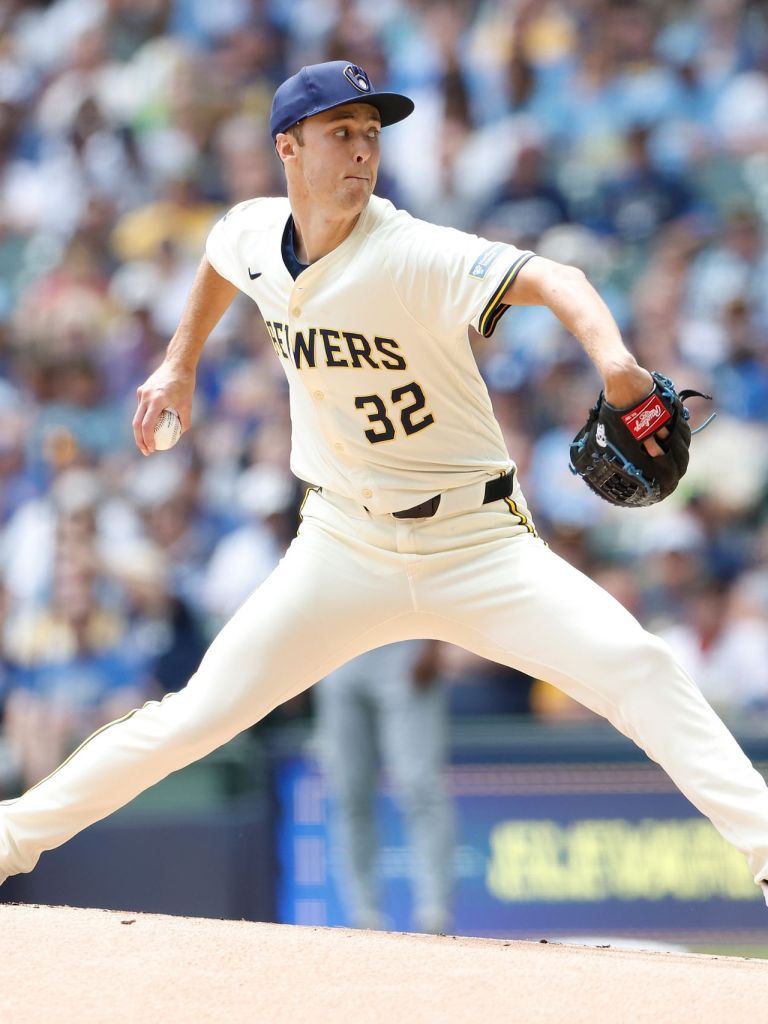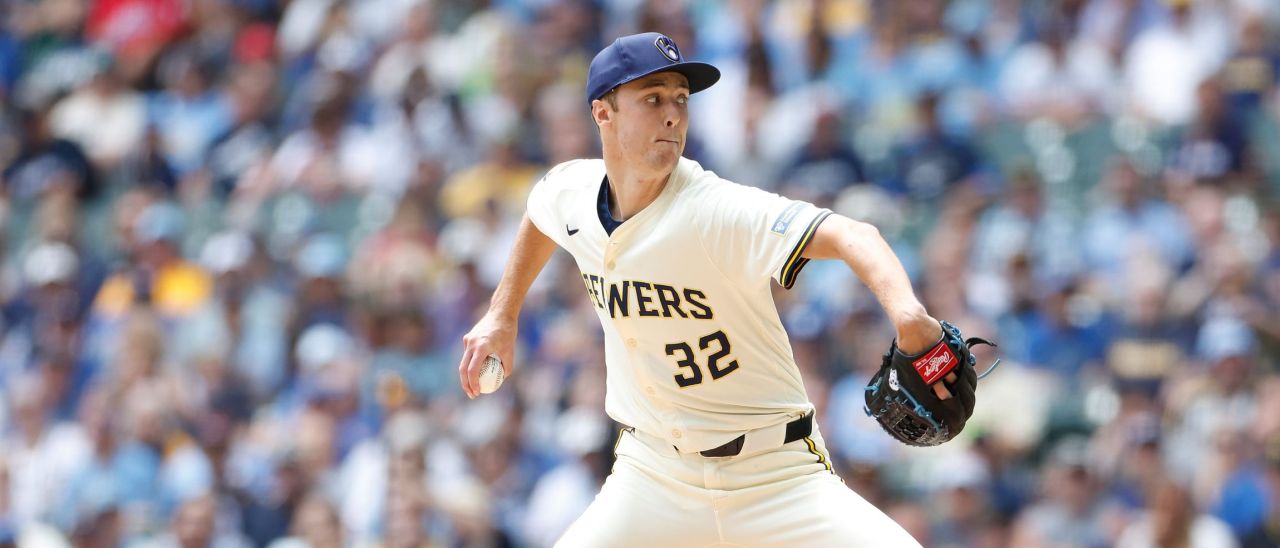Jacob Misiorowski’s 100 MPH Stuff Fueling Breakout With Brewers As MLB Velocities Rise


Image credit: Jacob Misiorowski (Photo by John Fisher/Getty Images)
MLB pitchers have steadily thrown harder with each passing season, even as the league’s broader run-scoring environment has fluctuated over the past decade. That trend has continued into 2025, with league-wide fastball velocity once again on the rise:
What makes the modern era especially daunting for hitters is that today’s hardest throwers aren’t relying on raw velocity alone. Pitch shapes are more refined than ever, and secondary offerings are designed to play off elite fastballs with maximum intent.
It’s no longer just about how hard a pitch is thrown. It’s about how that velocity integrates into a complete arsenal.
Today, we’ll examine how some of baseball’s most electric arms are weaponizing their fastballs in a velocity-saturated landscape.
Triple‑Digit Starters
Only four starting pitchers have touched 100 mph at least five times this season:
- Hunter Greene, RHP, Reds (134 such pitches)
- Jacob Misiorowski, RHP, Brewers (62)
- Jordan Hicks, RHP, Red Sox (21)
- Tarik Skubal, LHP, Tigers (16)
The conversation starts with Misiorowski, who has taken the league by storm since debuting earlier in June.
The former Juco product has intrigued evaluators since joining the Brewers, but his national breakout came during the 2023 Futures Game. Now, the stuff is translating at the highest level.
What jumps out through Misiorowski’s first three starts is the suppression of contact quality. In a small sample (min. 25 balls in play), no pitcher has allowed a lower batting average, slugging percentage or weighted on-base average.
This is why, among his ERA estimators, xERA shines as so dominant. Conversely, the more traditional metrics are a bit behind (though still elite, to be clear).
The reason is that Misiorowski’s current 12.5 BB% would be the second-highest in the majors among qualified starters. He offsets it with a strikeout rate that would lead the league and a home run rate that appears lucky on paper, yet has been a consistent strength since his minor league days.
It’s outlier stuff on both ends. That’s what happens when you’re throwing 99.6 mph with the hardest slider and third-hardest curveball in the majors.
Then there’s Greene, currently on the injured list for the second time this season with groin and back issues. The silver lining is it’s not arm-related. Still, the spike in velocity has naturally raised some concerns about durability.
It was clear early in 2025 that this was a new version of Greene, one who had fully evolved. He’s pairing bullpen-grade heat with a starter’s workload.
Greene’s fastball has long stood out for its velocity, but the shape placed it in the so-called “dead zone,” where four-seamers lack ride or run. One way to overcome that flaw? Throw even harder.
His 2024 breakout (before this year’s velo bump) was in part fueled by the addition of a splitter. Baseball Savant’s movement profiles show how that pitch altered his arsenal: It breaks in the same general direction as the fastball, but arrives more than 10 mph slower. It’s a sequencing weapon that punishes fastball sitters.
Could triple digits ever become sustainable in a rotation? There’s valid skepticism, especially across three times through the order. However, as innings-per-start shrink, starters may empty the tank over fewer innings. Greene and Misiorowski are the leading test cases for what that future might look like.
Max‑Effort Velo
This is the modern closer: A former starter with enough health or durability questions that teams opted to unleash him in short bursts. The result? The hardest fastball in baseball.
Mason Miller is an outlier, having thrown 60 pitches at least 102 mph this year. By comparison, Aroldis Chapman with the Red Sox ranks second with 13.
It’s been a strange year for the Athletics righthander, whose 4.85 ERA doesn’t line up with any of his estimators.
The disconnect stems from an uncharacteristic 1.2 HR/9, a spike possibly linked to Sacramento’s mound conditions or small-sample noise. Notably, three of his four home runs allowed have come at home.
In conjunction with the hardest fastball in baseball, Miller throws an 87.4 mph slider. Hitters are forced to guess which pitch is coming and hope to square it up if they guess right. When his command is even average, Miller is nearly untouchable.
Other similar profiles include Jhoan Duran (Twins), Ryan Helsley (Cardinals) and Daniel Palencia (Cubs).
With lighter workloads out of the bullpen, these arms can let it loose on every pitch.
Heat With Movement
Then there are the relievers who don’t just throw 100 mph, but pair that velocity with movement, too.
Two of the best examples this season are Chapman and the Guardians’ Emmanuel Clase.
Chapman didn’t throw a sinker more than 10% of the time until 2023. Since then, its usage has climbed steadily, peaking at 32% this year with the Red Sox. He now throws his sinker and four-seamer a combined 75% of the time.
The results have been outstanding, as it’s arguably Chapman’s best season since 2016. That’s the power of combining elite velocity with run.
Meanwhile, Clase is bringing his signature cutter in at over 99 mph with sharp, gloveside movement.
He struggled with command early, allowing 10 earned runs in April alone, but those issues have since stabilized. His season-long BABIP remains elevated, but Clase has largely returned to form.
With outlier velocity on both his cutter and slider, he still features one of the most unhittable pitch combinations in baseball.
Like with MLB’s other highest-velocity pitchers, it’s proof that it’s not just how hard you throw, but how you weaponize it.
